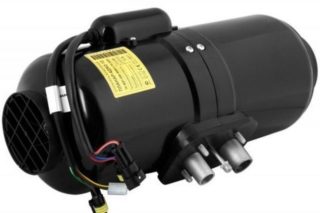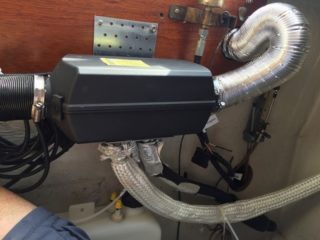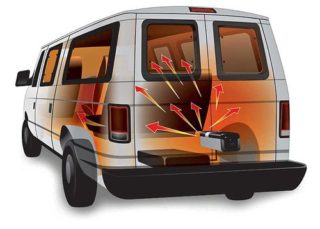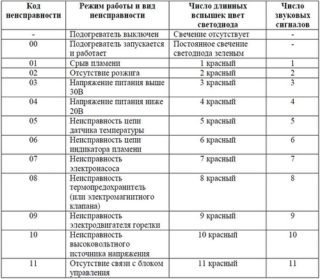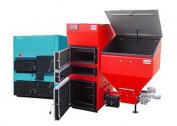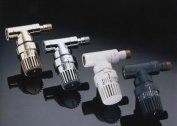In winter, the inside of the car is cold during driving and at stops. This creates inconvenience for the driver and passengers, and also makes it difficult to start the engine. The autonomous heater Planar quickly warms up the car interior and maintains a comfortable temperature.
The principle of operation and features of the heater Planar
The Planar heater is a product of the Russian companies Advers and Teplostar. The principle of operation is simple: the device draws in air, warms up and returns it back to the cabin. The device uses its own diesel fuel for heating - its operation does not depend on the engine of the machine. For the device to function, it must be connected to a network with a direct current of 12 or 24 V.
The design is simple:
- All elements are located in a cylindrical or box-shaped case.
- Diesel fuel is picked up by a pipe from the tank of a diesel car or special heating. The pump pumps fuel.
- The diesel fuel through the pipe enters the nozzle of the combustion chamber. A glow plug is placed here. Diesel fuel burns in the chamber.
- To burn diesel fuel, you need air. The feed is carried out along a flexible sleeve connected to the inlet pipe. Forced air is forced by a fan.
- The gas produced by combustion exits through the chambers and releases heat through the heat exchanger to the main air masses. Smoke is discharged through the vent hose outside the passenger compartment.
- The electric fan pumps air. First, it cools the electric motor and heats up from it. Then it passes through the heat exchanger and its temperature still increases. Warm air is supplied to the cabin.
- Switching blocks performs a loop with decks-connectors. Their shape is such that eliminates erroneous connection. Regulate the functions of the device using a remote control or other modifications.
- The safety of the heater is ensured by a number of sensors and control devices. The indicator monitors the flame in the combustion chamber, the temperature sensor measures the air temperature at the outlet of the device and so on.
The operation of the device can be controlled by the remote control or by using the regulator directly on the housing. The heater functions automatically: when the temperature in the cabin reaches a predetermined value, the Planar turns off, when it drops, it turns on.
Advantages and disadvantages
Heater Planar helps out many drivers. Truckers, drivers of regular buses, travelers have to spend a lot of time in the car cab. In the cold season, heating the cabin due to engine operation is insufficient. Planar solves this problem.
Advantages of the device:
- For an hour, the heater, depending on its power, heats from 34 to 120 cubic meters. m. air.
- Planar is economical - at such a high efficiency it consumes no more than 29–42 watts. The same volume of heated air requires from 0.24 to 0.37 liters of diesel per hour.
- Planar is effective at very low temperatures overboard - below -20 C.
- Installation works without time limits. Automatically turns off when the specified temperature is reached and turns on when it decreases. You can turn off the device manually.
- The device is safe. When capsizing, low flame, flame goes out, outages with air or fuel Planar is turned off.
- Noise level is low.
- If you connect the exhaust pipes, warm air can be sent not only to the cab, but also to the passenger compartment of the bus or to the cargo compartment, if the transported cargo needs a certain temperature regime.
- The device operates autonomously from a car engine. This is a convenient option for spending the night in a car, as Planar can heat the cab all night.
There are no shortcomings. The autonomous automobile heater Planar fully meets its purpose.
The heater is used not only in cars, but also for heating cabins, vans, booths, tents.
Options and specifications
The complete set of a heater includes all knots and details of the device. The number and type of additional elements depends on the model. Mandatory are all fasteners - washers, bolts, clamps, gaskets, plugs, shields, and also all connecting elements - power harness, fuel pump, exhaust pipe. Planar is equipped with its own fuel tank and control panel.
There are 4 types of device. The main characteristics are given in the table.
| Model | 2D-12-S (24 S) | 4DM2-12-S (24 S) | 44D-12-GP-S (24 S) | 8M-12-S (24 S) |
| Rated voltage | 12 (24) | 12 (24) | 12 (24) | 12 (24) |
| Thermal power, kW (max and min) | 0,8–2,0 | 1,0–3,0 | 1,0–4,0 | 2,0–6,0 |
| Fuel consumption, l / h (max and min) | 0,1–0,24 | 0,12–0,37 | 0,12–0,51 | 0,42– 0,76 |
| Power Consumption, W (max and min) | 10–29 | 9–38 | 10–58 | 8–85 |
| The volume of heated air, cubic m / h (max min) | 34–75 | 70–120 | 70–120 | 70–175 |
| Start and stop mode | Manual / Remote | Manual | Manual / Remote | Manual |
| Weight kg | 10 | 10 | 10 | 12 |
The air heater Planar 4DM2 24 differs from 12 only in the requirements for the current strength of 24 V, not 12 V.
All Planar models run on diesel. If the feed is made from your own tank, the diesel fuel is diluted with kerosene in certain proportions. The ratio depends on the type of diesel fuel and temperature.
Control and management system
The Planar heater operates in several modes. Operational safety, adjustment and diagnostics of systems are provided by sensors and a control unit.
Control block
The module is located in the housing and connected to the Executive units with switching loops. Its functions are as follows:
- turning on and off the device;
- control and management of the fuel combustion process;
- initial diagnosis of breakdowns during startup;
- automatic ventilation after stopping Planar;
- emergency shutdown in case of failure of any node, flame attenuation, power surges, heat exchanger overheating and other situations.
The control unit works with the remote control.
Operating modes
The autonomous air engine heater operates in 3 modes. However, the use often depends on the configuration of the model:
- By power - heats the cabin as quickly as possible. A heater installed at a certain power level - from 1 to 8, works continuously until the device is manually turned off.
- By temperature - the heater warms up the air to the set temperature. Then the heater turns off and automatically turns on again as soon as the air cools to the specified minimum. In automatic mode, the device operates until a manual shutdown.
- Ventilation - provides air exchange. Combined with temperature or power adjustment. The temperature is maintained with high accuracy, does not fluctuate in a given range.
Temperature and power are set before starting. During operation, you cannot adjust the parameters.
Control panels
The remote control is installed on the dashboard or hung on the container in any place convenient for the driver. The device is connected to the device by a loop. The remote is convenient in that it regulates the Planar and serves as a diagnostic tool.
Heaters are equipped with different types of remote control:
- PU-10M - allows Planar to operate in power and temperature mode, ventilation is not provided. Equipped with LED indicator.
- PU-5 - allows Planar to work in all modes. The potentiometer flywheel is equipped with a conditional calibration, so that the temperature can be set more precisely. The indicator indicates work and malfunctions.
- PU-22 - functional buttons allow you to select the mode, temperature sensor, the readings of which will be considered control, change the power and temperature. Information about the operation of the Planar and breakdowns are reflected on the LED screen.
By the number, color and behavior of the LEDs, you can determine the cause of the problem and quickly eliminate it.
Installation requirements
Planar installation is carried out strictly according to the instructions:
- The heater is fixed both to the wall and to the floor. The position is strictly horizontal, tilting is prohibited.
- The distance from the walls or partitions to the inlet is at least 5 cm.
- The distance from the walls of the cab from the outlet is at least 15 cm.
- The heater is mounted in a place where it can be repaired and dismantled.
- The housing must not touch the walls or floor of the cab.
- The fuel tank must not be mounted in the passenger compartment, trunk or engine compartment. It is fixed so that when spilling the diesel fuel does not appear on the wiring.
- Combustion air is taken outside, and not from the passenger compartment or cargo compartment. The suction port of the nozzle is placed against the air flow during riding.
Place the inlet so that during operation Planar does not suck in exhaust fumes.
Possible error codes and malfunctions
The Planar indicator system signals errors. A number of breakdowns can be eliminated independently:
- 1 on the screen or indicator blinking - heat exchanger overheating. It is necessary to check the passage of air through the heater.
- 2 or 12 short blinks after a pause - overheating of the device itself. Check the nozzles and the air supply to the combustion chamber.
- 12 or 15 or 9 fast blinks indicate power surges. The device turns off.
- 12 or 2 blinks - start-up is impossible due to lack of fuel, air, violation of exhaust gases.
- 20 or 30 and 8 blinks - communication is lost between the module and the control panel. Check the loops.
- 29 or 3 blinking LEDs - flame failure in the burner. It is necessary to check the fuel supply.
- 35 or 13 blinks - an error peculiar only to the 8DM model. Disruption of flame due to low voltage.
- 78 - is marked only on the screen. This is a warning that flame failure occurs too often.
Malfunctions indicated by the following codes cannot be rectified independently. It requires the dismantling of the device and the intervention of a specialist:
- 4 or 6 or 6 blinks - the temperature sensor has failed.
- 5 or 5 flashes - the flame indicator is broken.
- 9 or 4 blinks - a problem in the glow plug.
- 10, 27, 28 or 11 blinks - the electric drive is damaged;
- 11 on the screen or 18 blinks - the temperature sensor on the supply pipe is broken.
- Problems on the incoming pipe are coded by 23 or 15 by flickering.
- 17 or 7 flashes - failure of the fuel pump.
- The appearance of the number 33 or 16 flashes after a pause indicates that the device is locked, since overheating has been registered three times in a row. Unlocking is carried out only in the service center.
- 36 or 20 blinks - The flame temperature sensor detects too high a temperature.
It is impossible to ignore the readings of the device. When repeating errors of the same type, the device locks or fails.
Heater Instruction Manual Planar
You can install and run Planar yourself, but if you do not have experience with heating systems, you need to invite a specialist.
When turned on, the Planar conducts testing, and if all the elements are OK, it starts ignition. First, the chamber is purged, then diesel fuel and air are supplied. The burner works until the sensor detects the set value.After that, the device turns off if it does not work in power mode.
After a manual shutdown, the Planar is automatically ventilated.
Safety precautions
Cabin or car salon - a very small room. Observe safety precautions strictly:
- in the car there should be a fire extinguisher, in the change house or garage - at least a bucket of sand;
- it is forbidden to lay the fuel wire inside the cabin or the cabin;
- the device is turned off during refueling;
- during repair and welding operations, the heater is disconnected from the battery;
- it is forbidden to disconnect the device from the power supply before the purge is completed;
- after stopping the device, repeated switching on is performed no earlier than in 5-10 seconds.
In case of non-compliance with safety regulations, the manufacturer has the right to refuse warranty service.
